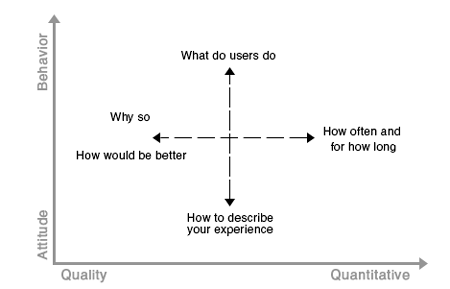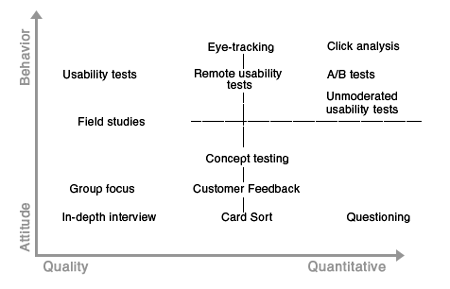Abstract
Attention! At the time of writing this abstract, the master's work is not completed. Estimated completion date – May 2020. The full text of the work and materials on the research can be obtained from the author or his scientific adviser after the specified date.
Content
- Introduction
- 1. Relevance of the topic
- 2. The purpose and objectives of the study, the planned results
- 3. Audience research value
- 4. User Experience Research Methods
- —onclusions
- References
Introduction
Currently, design plays an important role in the formation of any company or production on the market. As far as Web technologies are concerned, most attention is paid to user experience (UX). In view of this, there is an urgent need to develop an effective user experience research strategy based on existing methods.
1. Relevance of the topic
Each project that releases its unique product on the Internet sites has the opportunity to remain unclaimed. And with the development of Internet technologies, the issue of improving the competitiveness of Web sites is becoming increasingly relevant. An important point in creating an effective site is usability. Suitability of use or usability ("Usability" – the possibility of use, usefulness) is "the property of a system, product or service, in the presence of which the installed user can use the product in certain conditions of use to achieve the established goals with the necessary effectiveness, efficiency and satisfaction" [ 1 ]
2. The purpose and objectives of the study, the planned results
In the field of user experience, there is a wide range of research methods available, ranging from proven methods, such as laboratory usability studies, to those that were developed recently, for example, unmoderated online UX assessments.
The problem is the inability to use the full set of methods for one project. But most projects will benefit by using several research methods and by combining their ideas. Unfortunately, many development teams use only one or two methods that they are familiar with. The key question is what to do and when exactly this method will bring the best result.
Main tasks of the research:
- APerform analysis of existing methods in the field of user experience research.
- Justification of the feasibility of creating user experience research algorithms as a business process.
- Formation of the basic requirements that the developed algorithms must satisfy
- Development of models and algorithms for researching consumer experience based on an object– oriented approach.
- Testing the formed user experience research methodology, evaluating its effectiveness.
3. Audience research value
Design is an iterative process. If something does not fit, we return to the initial or desired stage and redesign. The scheme looks like this:
- Define the context of use and needs (form a user flow, determine the empathy of users).
- Develop a design solution.
- Create a prototype or implement.
- ќAssess compliance and KPI

Figure 1 – Iterative Process Model
Audience research will help you make faster decisions about the adjustments you need to make. You can:
- make sure that the target audience of the product is selected correctly;
- understand the goals, motives, expectations and context of use;
- check out ideas and new concepts for product development;
- find out how the product is perceived in comparison with competitors
4. User Experience Research Methods
All methods can be viewed in a three– dimensional structure with the following axes:
- study of attitude versus study of behavior;
- qualitative methods versus quantitative methods;
- context of use.
Each dimension provides a way of research in terms of the questions they answer and the goals for which they are suitable.
The key difference between relationship research and behavior research is that the former study the opinions of users, and the latter investigate their actions (very often they are completely different).
Between these two extremes are two of the most popular methods that will be useful: usability testing and УfieldФ research. One of them implies observing the user in the process of completing the tasks, and the other, on the contrary, implies observing the client in the usual conditions for him. Using the resulting mixture of self– esteem and behavioral data, you can move to any end of this dimension, although it is recommended to lean toward the behavioral side.

Figure 2 – 3D user experience study model
All user experience studies are conventionally divided into two groups. Qualitative research collects and generates data on user behavior based on direct observation of it. While quantitative research receives data indirectly through tools or measurements.
Due to the nature of their differences, qualitative methods are much better for answering questions whether there are problems and how to fix them, and quantitative methods, how effective the decisions were made and what exactly was popular.

Figure 3 – Graph of priority research methods
The third difference is related to how and whether the study participants generally use a product or service. This can be described as:
- natural or near– natural use of the product;
- scripted product use;
- do not use the product during research;
A hybrid of the above is also possible.
A hybrid of the above is also possible.
The combination and development of these methods will make it possible to most effectively build further business processes of the company, improve the quality of services provided, which will more fully take into account the interests of consumers.

Figure 4 – Strategy (animation: 11 frames, 7 cycles of repetition, 30.4 kilobytes)
Thus, it is planned to develop algorithms based on the analysis of existing methods in the field of user experience research. The implementation of the task will be performed on the basis of an object– oriented approach. It is also planned a step– by– step implementation of algorithms at the enterprise to improve the quality of the services provided and evaluate the effectiveness of the developed algorithms taking into account the interests of users.
Conclusions
Although many research methods, based on user experience, originate in scientific practice, their goals are not always purely scientific, but they still need to be adjusted to meet the needs of stakeholders. An analysis of user experience research is essential for any organization that provides its services on the Internet. Successful website creation and maintenance requires periodic analysis of the Internet resource for usability rules. If at the first stage it is possible to create a website according to all the basic usability principles, then in the future, when updating the site, new implementations will still be required, both from the design side and technically. It is necessary to pay attention to usability not only when designing a site, but also with any new change and revision.
In the end, the success of the work depends on the influence of the interface on improving the user experience of the corresponding website or product.
References
- Юзабилити сайта: принципы и методы оценки [Электронный ресурс]. – Режим доступа: UX для начинающих: практическое руководство. Часть 1 [Электронный ресурс]. – Режим доступа: https://habr.com/ru/company/pechkin/blog/301290/.
- What 18 UX experts say makes a good UX designer [Электронный ресурс]. – Режим доступа: https://userpeek.com/blog/what– makes– a– good– ux– designer/ .
- Тидвелл Дж. Разработка пользовательских интерфейсов.– Питер, 2007– 480 с.
- Я. Нильсон Элементарные основы юзабилити [Электронный ресурс]. – Режим доступа: http://www.webmascon.com/topics/testing/14a.asp .
- Joseph S. Dumas, Janice C. Redish. Practical Guide to Usability Testing. – Intellect Books, 1999. – 404 с.
- Ben Shneiderman, Catherine Plaisant. Designing the User Interface: Strategies for Effective Human– computer Interaction. – Addison Wesley, 2004. – 672 с.
- UX– дизайнер[Электронный ресурс]. – Режим доступа: http://buduguru.org/profession/19 .
- Кейт Мейер Какой метод выбрать для исследования аудитории сайта [Электронный ресурс]. – Режим доступа: https://vc.ru/design/39317– kakoy– metod– vybrat– dlya– issledovaniya– auditorii– sayta .
- Мазур Д.М. Разработка алгоритмов оценки интерфейса интернет– страниц и навигации в пределах страниц методами интеллектуального анализа [Электронный ресурс]. – Режим доступа: http://masters.donntu.ru/2013/fknt/mazur/links/index.htm .
- Шинкаренко В.С. Анализ аудитории и прогнозирование посещаемости интернет ресурса[Электронный ресурс]. – Режим доступа: http://masters.donntu.ru/2006/fvti/shynkarenko/diss/index.html .
- Designing User Interfaces for International Use [Электронный ресурс]. – Режим доступа: https://www.nngroup.com/books/designing-user-interfaces-international-use/.
